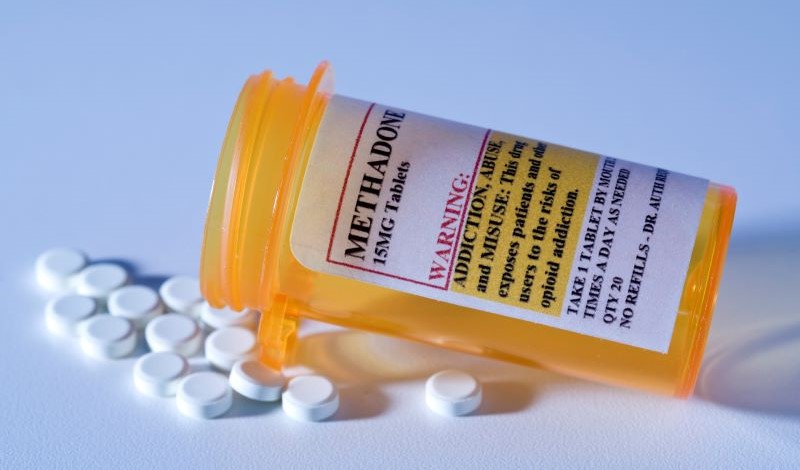
Scholars identify avenues to curb regulatory barriers to substitution therapy.
Every five minutes, someone in the United States dies from a drug overdose, according to Rahul Gupta, the director of the Office of National Drug Control Policy.
After more than two devastating decades, the opioid crisis still ravages the United States and shows no signs of slowing down. Instead, fueled by large quantities of highly toxic fentanyl, 2021 has been the year with the highest number of overdose deaths ever recorded.
According to Laura E. Stanley and Bridget C.E. Dooling of the GW Regulatory Studies Center, improving access to methadone—a synthetic opiate medication used to combat addictions to heroin and other opioids—could play a key role in the federal government’s fight to reduce the number of overdose deaths.
Stanley and Dooling argue that agencies should consider increasing methadone’s availability for treatment. In a forthcoming article, they explain that doing so would not necessarily require additional legislation. Instead, they show how agencies could achieve this goal through regulatory action.
Among the many changes that Stanley and Dooling discuss are several aimed at reducing the amount of effort patients must expend to receive their medication. As Stanley and Dooling point out, some of the current regulatory restrictions impose hurdles that limit the success of treatments.
Stanley and Dooling state that improving patients’ access to take-home methadone doses could reduce this burden. They explain that, under the current regulations, some patients must visit an opioid treatment program (OTP)—more commonly known as an “opioid clinic”—almost daily to receive their medication.
According to Stanley and Dooling, the frequency of these visits results from a rule that limits take-home doses primarily to patients that have proven to be responsible in handling opioid drugs for unsupervised use. But even if patients meet this requirement, the regulation severely restricts the number of doses by a time-in-treatment requirement.
Under the current regime, practitioners can only hand out one take-home dose per week in the first 90 days of treatment. This number rises gradually to three doses a week during the subsequent two 90-day periods and afterwards plateaus for the first year at six take-home doses a week. After two years in treatment, patients may reach the maximum limit of a one-month supply.
Stanley and Dooling explain that, as a result of these limitations, new patients in particular must travel to their treatment facilities almost daily, and these frequent trips impair therapy success significantly. Stanley and Dooling illustrate this point by citing a study that found that the earlier patients have access to take-home supply, the more likely they remain in treatment.
New evidence confirms this effect. In recent years, the Substance Abuse and Mental Health Services Administration (SAMHSA) has issued exemptions that have allowed a more flexible approach for take-home medication to maintain treatment during the COVID-19 pandemic. According to the agency, these adjustments led to better treatment engagement, higher satisfaction among patients, and only few cases of misuse. Because of the positive results, the agency has already announced that it intends to amend its regulation to make its new approach permanent.
Stanley and Dooling argue that the agency should be able to do this with relative ease. They explain that the patient care regulation containing the take-home restrictions is based on the Narcotic Addict Treatment Act (NATA). In its relevant provision, this statute does not specify mandatory content for such patient care regulations, and thus gives the agency broad discretion, according to Stanley and Dooling.
Furthermore, Stanley and Dooling point out that not only the frequency but also the distance patients have to travel to receive their medication limits therapy effectiveness. They therefore argue that the executive branch should consider expanding the number of methadone distributors by allowing pharmacy pickup.
Stanley and Dooling explain that, at present, only practitioners in OTPs can hand out methadone. This imposes a significant barrier, especially in rural areas, where few treatment programs exist and patients must travel extensively for their medication.
Research indicates that these long distances have a negative impact on the success of opioid therapies. For instance, Stanley and Dooling identify one study that shows that patients who have to travel more than one mile to their facility were only half as likely to complete treatment as those who had to travel less.
Stanley and Dooling propose that the Drug Enforcement Administration (DEA) consider changing its regulation on methadone dispensing and allow practitioners in OTPs to prescribe the drug for pharmacy pickup. In doing so, the agency could expand the network of methadone distributors and thus reduce the logistical burden that patients face.
Stanley and Dooling contend that this change would not require additional legislation. Instead, they argue that the DEA’s current rule is more restrictive than the relevant statutory provision requires. They explain that the NATA allows registered practitioners to “dispense” narcotic drugs, which in turn is defined as “to deliver a controlled substance to an ultimate user . . . by . . . a practitioner including the prescribing and administering of a controlled substance.”
Relying on the NATA’s legislative history, Stanley and Dooling argue that, in this context, “prescribing” should be construed as “issuing of prescriptions that are filled at a pharmacy,” and they conclude that the agency could adapt its rules to be more permissive.
In the current era of fentanyl, with more than 107,000 annual drug overdose deaths, President Joseph R. Biden has voiced his commitment to address the public health crisis and taken action to improve treatment for those struggling with opioid addiction. Stanley and Dooling contend that regulators have significant discretion to make methadone—widely viewed to be one of the most effective medications against opioid addiction—more available. As a result, they conclude that agencies could consider making expanded access to the drug an additional cornerstone in the government’s efforts.



